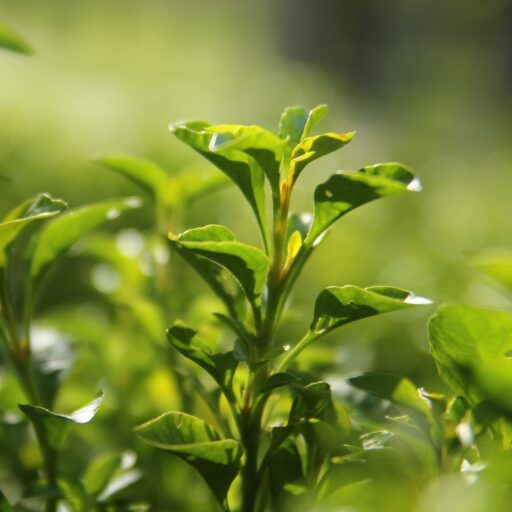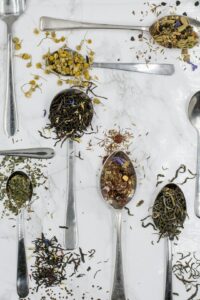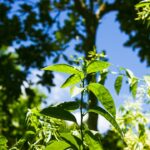Support our educational content for free when you purchase through links on our site. Learn more
Where in the US Can Tea Be Grown?[2023]
Are you a tea lover who is interested in where tea can be locally sourced? Or are you a tea grower who is looking for new fertile land to expand production? The United States is known for its diverse agriculture, and tea production is no exception. Today, we will explore the different regions of the US that are optimal for tea growing, the history of tea farming in the US, and the benefits of locally sourced teas.
History of Tea Farming in the US
Although it might be surprising to some, tea farming in the US can be traced all the way back to the late 1700s. The first successful tea plantation was established in Charleston, South Carolina, in 1888, and successfully sold tea into the 1900s. However, the industry faced challenges during the First World War and the Depression when the import of low-cost tea resumed.
Fast-forward to today, and tea farming has made a comeback in the US as more people prioritize locally-sourced and highly-sustainable products. In recent years, tea growers have been able to utilize similar growing techniques of successful vineyards across the US, allowing for further experimentation in new regions to find success.
Where Can Tea Be Grown in the US?
While tea can grow in a variety of climates, there are a variety of regions in the US that have become hubs for its production.
Here are some regions tea growers might want to pay close attention to:
-
Hawaii: Hawaii has become a well-known destination for tea lovers and growers alike. The high elevation, unique soil, and year-round warmth make it an ideal location for tea to grow. In fact, Hawaii is home to award-winning tea plantations such as the Big Island Tea Co.
-
South Carolina: As we mentioned earlier, South Carolina was home to the first successful tea plantation in the US. While tea production did dwindle after the Depression, there has been a resurgence in the industry in recent years. Today, many tea growers in the region are utilizing and experimenting with growing black, green, and oolong teas.
-
Georgia: The climate and soil of Georgia are a perfect fit for tea growing, and black tea production in the state is on the rise. Solar Farmhouse Tea has become a major player in the region and is known for producing high-quality Assam black tea.
-
North Carolina: North Carolina's climate is fitting for tea growing as it provides a humid subtropical environment that is beneficial for the growth of tea plants. In fact, the famous Charleston tea plant also exists in Charlotte, North Carolina.
-
Washington: The northwest region's climate can create ideal conditions for tea cultivation with unique flavors. Beautifully processed tea can be produced with practices of hand-picking, rolling, drying, and firing leaves.
-
California: The warm and dry weather of California can make it a good candidate to grow a wide range of tea types from volatile to black tea with the focusing of general best practices.
While these regions have become known for producing tea, it is still possible for other regions across the US to get involved in tea growing.
Benefits of Locally Sourced Tea
Locally sourced products are more prevalent than ever with the growth of initiatives that encourage the use of sustainable and responsible agriculture. Here are the key benefits of locally-sourced tea:
-
Reduced carbon footprint: By producing and purchasing locally, the emissions produced by transportation of products over long distances are significantly reduced.
-
Promotes small business growth: Investing in locally-sourced tea supports independent farms and businesses, which helps the local economy.
-
Higher quality: Locally-sourced tea is often fresher and of higher quality since it does not have to travel long distances, which can affect the flavor profile.
Additionally, tea produced in the US is not only local, but it provides the opportunity for customers to try unique flavors and production methods specific to the region.
FAQ
Q: Will tea grow in North Carolina?
A: Yes, tea can grow in North Carolina thanks to the state's humid subtropical environment. Varieties that have done particularly well include Assam, Camellia Sinensis and Camellia Oleifera.
Q: Is any black tea grown in the US?
A: Yes, black tea is grown in the US, with Georgia being a major player in its production. Solar Farmhouse Tea produces high-quality Assam black tea in Georgia.
Q: Can you grow tea in Georgia, USA?
A: Yes, tea grows well in Georgia thanks to its climate and soil. Georgia is known for its production of black tea, with Solar Farmhouse Tea being a major producer.
Quick Tips and Facts
- Tea farming in the US can be traced back to the late 1700s, but faced challenges and Canadian competition until the recent decade's revival.
- Tea grows well in warm and humid subtropical climates with well-draining, organically-rich soil.
- Hawaii, South Carolina, Georgia, North Carolina, Washington, and California are optimal states to grow tea commercially.
- Tea grown in the US is often fresher and of higher quality since it does not have to travel long distances, which can affect the flavor profile.
- By investing in locally-sourced tea, customers can support independent farms and businesses that help the local economy.
Are you ready to try locally sourced tea grown in the US? Supporting local agriculture can give many benefits beyond just flavor. We hope this article has been informative and helpful for any tea growers or tea enthusiasts out there. And remember, if you need advice on local sourcing, always reach out to Growing Teas™ for expert advice.
References
- Galvanin, C. (2021). History of tea in the United States. Tea Masters Blog.
- Goldfarb, R. (2017). Here’s What You Need to Know About Growing Tea in the USA. Modern Farmer.
- The United States League of Tea Growers. (n.d.). Tea Growing Regions.
- Carolina Tea Sapone, L. & Van Spong, Z. (2018). The story of Solar Farmhouse Tea company. Columbia Star.






